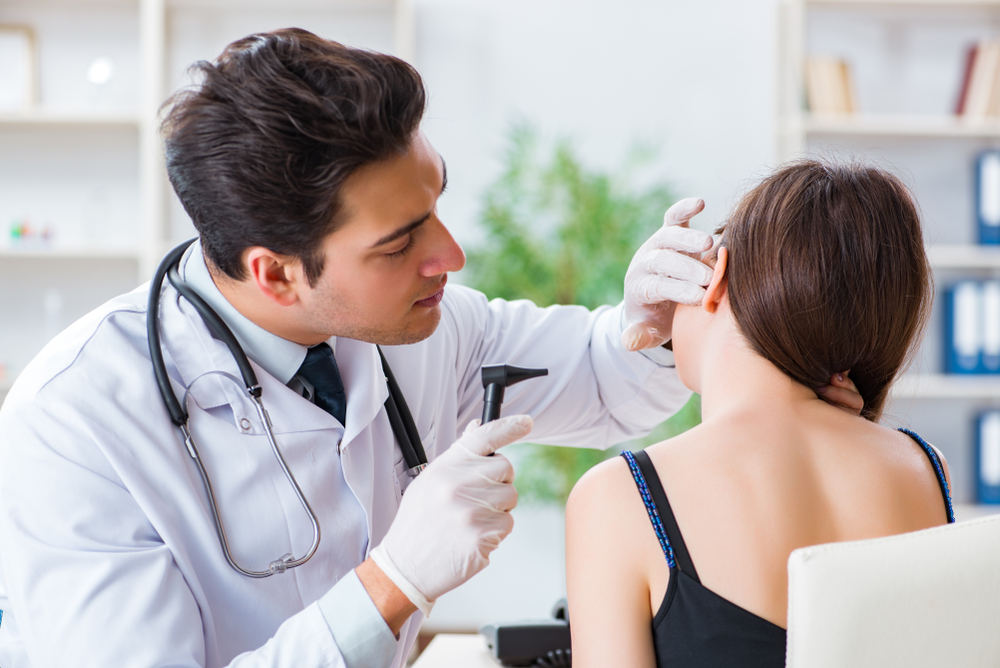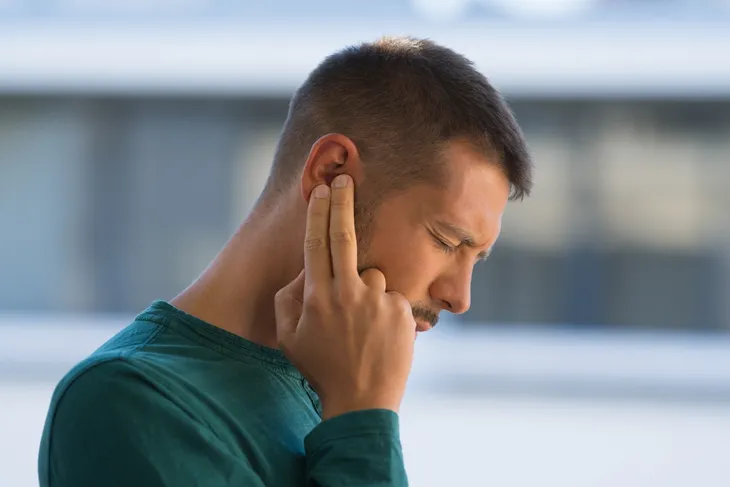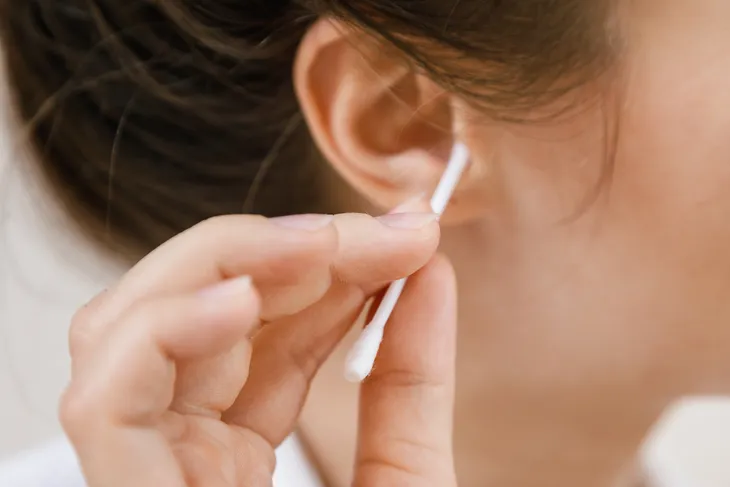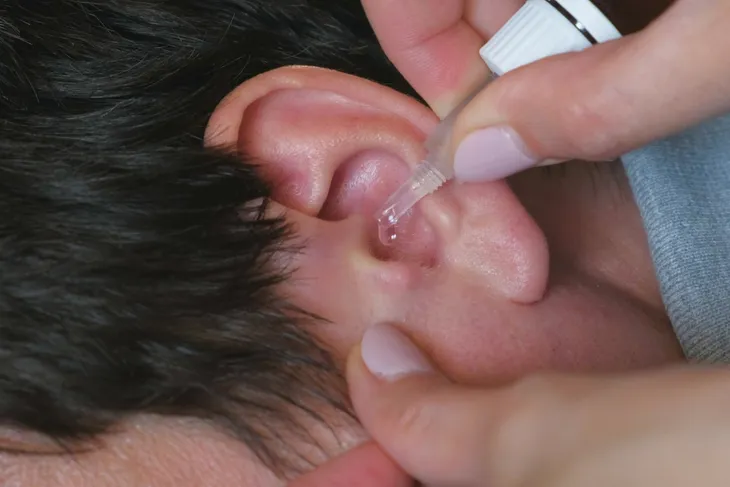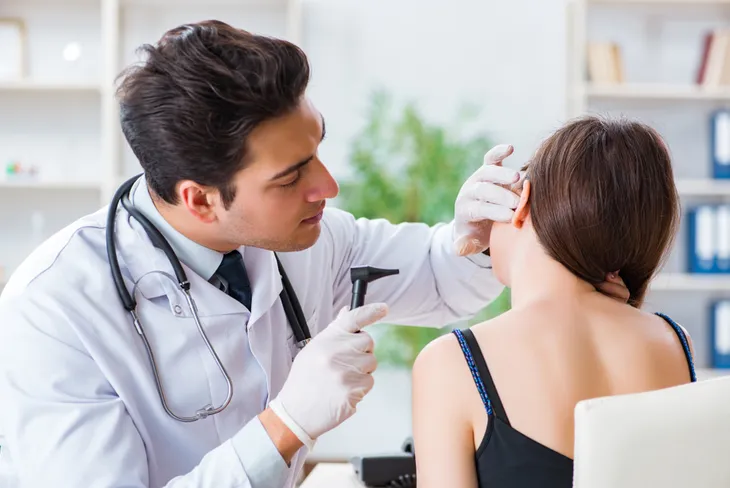- Earwax is essential because it protects and moisturizes your ears. But too much of it can cause problems.
- While ears generally do a good job of self-cleaning, earwax removal can be necessary in certain cases.
- Earwax buildup and blockage can impede your life, so it’s important to know how to recognize the symptoms.
Earwax, also called cerumen, is generally a good thing. In fact, it plays an important role in keeping our ears healthy. “Without earwax, the ears would be dry, itchy, and prone to infection,” according to Medical News Today. However, there is such a thing as too much of a good thing.
While many people don’t need to remove earwax — ears are typically self-cleaning — removing earwax buildup can help with hearing problems and earaches. But before you attempt to remove earwax at home, there are a few things to keep in mind. Here’s what you need to know about earwax buildup and blockage.
Why Do Ears Make Earwax?
Earwax is a waxy oil naturally made by the body to protect your ears. According to the Cleveland Clinic, earwax has “lubricating and antibacterial properties.” So, it helps prevent dry, itchy ears. And it protects your ears from dirt, dust, bugs, and other foreign particles.
Typically, “excess wax finds its way out of the canal and into the ear opening naturally, and then is washed away,” according to Healthline. But sometimes ears make more earwax than necessary. Earwax can build up and eventually lead to a blockage when that happens.
What Is Earwax Buildup?
Although earwax naturally washes away in many cases, earwax buildup can happen. According to Cedars-Sinai, “this buildup is called impacted earwax.” Buildup can occur when excess earwax collects in your ear and becomes too hard to wash away on its own.
According to Medical News Today, the American Academy of Otolaryngology says about 1 in 10 children and 1 in 20 adults experience earwax buildup. Since untreated earwax buildup can cause a blockage, keep reading to learn how to spot the signs and symptoms.
Symptoms of Earwax Buildup and Blockage
Most of the time, you probably don’t even think about earwax. If your ears self-clean as expected, then earwax doesn’t cause side effects. But when earwax builds up a lot, the Cleveland Clinic says common symptoms include:
- Hearing loss
- Earache
- Ringing in the ear (tinnitus)
- Itchiness in the ear
- Sense of fullness in the ear
- Discharge from the ear
- Dizziness
Healthline notes it’s uncommon to experience symptoms of earwax buildup and blockage in both ears. See a doctor if you have symptoms in both ears because something else could be causing it.
Causes of Earwax Buildup and Blockage
There are two main causes of earwax buildup and blockage: either your ear produces too much earwax, or you put objects in your ear that can push earwax deeper in. As previously mentioned, some people produce excessive earwax, which can accumulate and eventually harden.
Verywell Health says “the shape of an individual’s ear, ear trauma, scar tissue, water buildup, improper removal methods, and high amounts of ear hair” can cause excessive earwax production. Cedars-Sinai says using cotton swabs, swimming plugs, and hearing aids can also cause a blockage.
Complications of Incorrect Earwax Removal
Earwax buildup and blockage can be painful and impede your daily life. For instance, it can make it challenging to hear. So, a blockage isn’t something to ignore. However, WebMD says, “Problems can happen if earwax isn’t removed carefully and correctly.”
According to the source, complications include:
- Perforated eardrum
- Middle-ear infection
- Swimmer’s ear
- Permanent hearing loss
So, you should consult a doctor before removing earwax on your own. Keep reading to learn about potential home remedies.
Home Remedies for Excess Earwax
If your doctor recommends removing the earwax at home, then the Cleveland Clinic has a few home remedies to consider:
- Soften earwax: Use a few drops of mineral oil, baby oil, glycerin, or hydrogen peroxide-based ear drops to dissolve the earwax.
- Irrigation: Use a bulb syringe filled with water or saline solution to rinse the ear canal and wash away earwax buildup.
- Use a washcloth: Clean away earwax buildup with a damp washcloth. Don’t push the washcloth into your ear canal, though.
Remember, check with your doctor before treating earwax buildup on your own. They can help you find the right solution for your situation.
Home Remedies to Avoid
Not all earwax home remedies are created equal. In fact, Healthline advises against using cotton swabs, pen caps, or bobby pins to remove buildup since they can make the situation worse. Harvard Health says the practice can push earwax deeper into the ear canal, damage the ear canal or eardrum, and lead to ear infections.
Ear candles are another home remedy to avoid. If you haven’t heard of ear candling, then here’s a crash course: It’s the practice of inserting a lit, cone-shaped candle into the ear to pull earwax out of the ear. Healthline says ear candling has been around for thousands of years, but the source says the method can cause burns and injuries.
When to See a Doctor
If you’re experiencing symptoms of earwax buildup and blockage, then you should see your doctor. Your doctor can examine your ear and evaluate the situation. Then, they can rule out other conditions and recommend treatment.
For instance, your doctor might give you the OK to use a home remedy. If that’s the case, then you can discuss each option’s pros and cons. Alternatively, your doctor might recommend professional removal to take care of the buildup.
How Doctors Remove Earwax
Should your doctor recommend professional removal, there are a couple of methods they might use. For instance, the Mayo Clinic says your doctor might use a water pick or a bulb syringe to flush out the earwax. Or the source says your doctor might opt to use a curet to scoop out the earwax.
And if earwax buildup is a problem you experience regularly, then your doctor might recommend using earwax-removal drops periodically. The source notes the importance of following the directions “because these drops can irritate the delicate skin of the eardrum and ear canal.”
Wet vs. Dry Earwax
Since earwax can be wet or dry, you might wonder what each variation means. According to Verywell Health, wet earwax has a “higher proportion of lipids” than dry earwax. So, wet earwax tends to be sticky, while dry earwax tends to be flaky.
According to the Cleveland Clinic, people of European and African descent are more likely to have wet earwax. On the other hand, the source says those of Asian, East Asian, and Native American descent are more likely to have dry earwax.
Colors of Earwax
Much like how earwax can be wet or dry, it can also come in various colors. The Cleveland Clinic says wet earwax can be light yellow, honey-color, or orange-brown, while dry earwax is typically whitish-gray. In either case, the source says earwax usually gets darker the longer it’s in your ear canal.
Older earwax can become slightly discolored because it’s more likely to contain dust and other foreign particles. While healthy earwax can vary in color, the source says you should seek medical attention if you see white pus, greenish pus, or blood in your earwax. Also, see a doctor if your earwax is black.
Preventing Earwax Buildup and Blockage
Now that you know how to recognize the symptoms and treat earwax buildup, let’s take a look at preventing it in the first place. Healthline says one thing you can consider is regularly irrigating your ear. That way, excessive earwax is less likely to accumulate and harden.
Similarly, Verywell Health says another option to consider is dipping a cotton ball in mineral oil and then placing it in your outer ear canal for 10 to 20-minutes a week. The source also suggests getting a routine ear cleaning from a medical professional once or twice a year.
Of course, ears generally do a good job of self-cleaning. So, only those prone to earwax buildup and blockage need to have prevention on their radar. Always talk to your doctor before trying any of these prevention methods.
